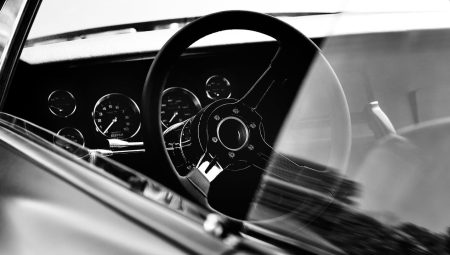When it comes to automotive design, engine mount placement is more than just a technical detail; it’s a game changer for performance. Think of engine mounts as the unsung heroes of your vehicle, quietly holding everything together while ensuring a smooth ride. The right placement can make your car feel like it’s gliding on air, while the wrong one can lead to a bumpy, uncomfortable experience. Have you ever wondered why some cars handle like a dream while others feel like they’re wrestling with the road? It all boils down to where and how the engine is mounted.
Engine mounts are critical components that secure the engine to the vehicle’s chassis. They serve multiple functions, including:
- Stabilizing the engine during operation
- Minimizing vibrations that can affect comfort
- Ensuring proper alignment for optimal performance
Without the right engine mount placement, you could experience excessive vibrations, reduced handling capabilities, and even premature wear on engine components. It’s like trying to enjoy a concert with a faulty sound system—no matter how good the band is, the experience will fall flat.
The placement of engine mounts can significantly affect a vehicle’s performance. For instance, a lower center of gravity can enhance stability, while a higher placement might improve acceleration. Imagine a tightrope walker: the lower they are to the ground, the steadier they feel. Similarly, the right engine mount position can lead to better acceleration, sharper handling, and an overall exhilarating driving experience.
Proper engine mount placement plays a vital role in minimizing vibrations transmitted to the chassis. This is crucial not just for comfort, but also for the longevity of your vehicle. Think of it this way: if your car is constantly shaking like a maraca, it’s not just annoying—it’s damaging. Effective vibration control enhances driver comfort and extends the life of various components.
The choice of materials for engine mounts affects vibration dampening capabilities. Different materials, such as rubber, polyurethane, and even metal, offer unique benefits:
| Material | Vibration Dampening | Durability |
|---|---|---|
| Rubber | High | Moderate |
| Polyurethane | Moderate | High |
| Metal | Low | Very High |
Choosing the right material can make all the difference in how your vehicle performs and feels on the road.
Different engine configurations require specific mount designs. For example, a V8 engine may need different mounts compared to a compact four-cylinder. These design variations cater to unique performance needs and vehicle types, ensuring that each car can deliver the best driving experience possible.
Engine mount placement directly influences engine movement during acceleration and deceleration. When you press the gas pedal, the engine shifts, and if the mounts are not optimally placed, this can lead to unwanted body roll and instability. Picture a roller coaster: the better the design, the smoother the ride. The same principle applies to your vehicle’s performance.
Selecting the optimal engine mount placement is crucial for performance. This involves understanding the vehicle’s design and the intended use. For performance vehicles, specialized mount placements may be necessary, while everyday vehicles often focus on balancing comfort and performance. It’s all about finding that sweet spot to enhance your driving experience.
Understanding Engine Mounts
Engine mounts are essential components in any vehicle, acting as the crucial link between the engine and the chassis. They serve multiple purposes, including securing the engine in place, absorbing vibrations, and isolating noise. Without proper engine mounts, your ride could feel like a bumpy rollercoaster, and nobody wants that!
There are various types of engine mounts, each designed to cater to specific needs:
- Rubber Mounts: These are the most common, providing a balance between flexibility and strength.
- Hydraulic Mounts: Filled with fluid, they offer superior vibration dampening for a smoother ride.
- Solid Mounts: Used in performance vehicles, they eliminate movement but can transmit more vibrations.
Understanding the importance of engine mounts goes beyond just comfort; it directly affects the vehicle’s performance and longevity. A well-placed engine mount can help maintain engine stability, ensuring that your vehicle handles like a dream. So, next time you think about your car’s performance, remember that those little mounts are doing a lot of heavy lifting!
Impact on Vehicle Performance
The placement of engine mounts is not just a minor detail; it’s a game-changer for vehicle performance. Think of engine mounts as the backbone of your car’s dynamics. When they’re positioned correctly, they can enhance acceleration, improve handling, and create a more enjoyable driving experience. If the mounts are too rigid or poorly placed, it can lead to a bumpy ride, affecting everything from steering responsiveness to tire wear.
Consider this: if your engine is mounted too high or too low, it can shift the vehicle’s center of gravity, making it feel top-heavy or unstable during turns. This can compromise not only speed but also safety. Conversely, an optimal placement allows for a balanced weight distribution, which is crucial for cornering stability and overall road grip.
Additionally, the engine’s vibration control is heavily influenced by mount placement. Properly positioned mounts absorb and reduce vibrations, enhancing comfort for both the driver and passengers. This means less fatigue on long drives and a quieter cabin environment. In summary, engine mount placement is a critical element that shapes the vehicle’s performance, making it essential for manufacturers and enthusiasts alike to give it the attention it deserves.
Vibration Control
The placement of engine mounts is crucial for effective . Imagine driving a car that feels like it’s shaking apart; not only is it uncomfortable, but it can also lead to serious wear and tear on your vehicle. Properly positioned engine mounts help absorb and dampen vibrations, ensuring a smoother ride. When the engine is securely mounted, it minimizes the amount of vibration transmitted to the chassis and, ultimately, to the driver and passengers.
In fact, the effectiveness of vibration control can be influenced by several factors, including:
- Mount Material: Different materials offer varying levels of vibration dampening. For instance, rubber mounts are common for everyday vehicles, while polyurethane mounts might be used in performance cars for better rigidity.
- Mount Design: The design of the mount can also play a role. Some mounts are designed to allow for more movement, which can help absorb vibrations better than rigid mounts.
Ultimately, the goal is to achieve a balance between comfort and performance. A well-placed engine mount not only enhances the driving experience but also contributes to the vehicle’s longevity. So, the next time you think about your car’s performance, remember that the unsung hero might just be the engine mount!
Material Considerations
When it comes to engine mounts, the choice of material is not just a detail; it’s a game-changer! Different materials can dramatically influence how well the mounts absorb vibrations and support the engine’s weight. Common materials include rubber, polyurethane, and metal, each offering unique benefits and drawbacks.
For instance, rubber mounts are popular for their excellent vibration dampening properties, making them ideal for everyday vehicles where comfort is key. On the other hand, polyurethane mounts provide a firmer hold and improved performance, perfect for those high-speed adventures. Metal mounts, while durable, can transmit more vibrations, which might not be suitable for all drivers.
Ultimately, the right material can enhance not only the performance but also the longevity of your vehicle. Consider the following factors when selecting engine mount materials:
- Vibration Control: How well does the material absorb shocks?
- Durability: Will it withstand the rigors of your driving style?
- Cost: Does it fit within your budget while offering the needed performance?
Choosing the right material is crucial for achieving the perfect balance between performance and comfort. So, whether you’re cruising down the highway or tearing up the track, remember that the right engine mount material can make all the difference!
Mount Design Variations
When it comes to engine mount design variations, the choices you make can have a profound impact on your vehicle’s performance. Each engine configuration demands a unique approach to mounting, ensuring that it functions optimally within the vehicle’s structure. For instance, front-engine vehicles typically utilize different mounts compared to mid-engine or rear-engine layouts. This is because the weight distribution and dynamics of engine movement vary significantly.
Consider the following factors that influence mount design:
- Engine Type: Different engine types (e.g., V6, V8, electric) require specific mount designs to accommodate their unique characteristics.
- Vehicle Purpose: Performance vehicles often necessitate stiffer mounts for better handling, while everyday vehicles prioritize comfort.
- Material Selection: The choice of materials, such as rubber, polyurethane, or even metal, affects both the durability and vibration dampening capabilities of the mounts.
Ultimately, understanding these design variations not only enhances vehicle performance but also contributes to the overall driving experience. Whether you’re tuning a race car or simply ensuring your daily driver runs smoothly, the right engine mount design is essential for achieving the desired balance between performance and comfort.
Engine Movement and Handling
The placement of engine mounts is not just a technical detail; it’s a game-changer for your vehicle’s handling. Imagine the engine as the heart of your car, pumping power through its veins. When the engine moves during acceleration or deceleration, the way it’s mounted influences how that power translates to the wheels. If the engine is positioned too far forward or backward, it can lead to unwanted torque steer or instability during tight turns.
Moreover, the engine’s movement affects the weight distribution of the vehicle. A well-placed engine mount can enhance cornering stability and overall control on the road. For instance, in high-performance vehicles, you’ll often find mounts designed to minimize engine sway, allowing for a more responsive driving experience. This results in better traction and a more connected feel to the road.
In contrast, poor engine placement can lead to excessive vibrations and noise, disrupting the driving experience. Here’s a quick overview of how engine movement impacts handling:
- Acceleration: Proper mount placement ensures smooth power delivery.
- Deceleration: Minimizes engine lurch, maintaining driver control.
- Cornering: Enhances stability and grip during sharp turns.
Ultimately, understanding engine movement helps you appreciate the intricate dance between power and control, making your driving experience not just about getting from point A to point B, but about enjoying the journey.
Choosing the Right Placement
When it comes to engine mount placement, making the right choice is crucial for achieving optimal performance. Think of it as the foundation of a house; if it’s not solid, everything built on top will suffer. So, how do you determine the best spot for your engine mounts? First, consider the vehicle’s design. For performance vehicles, mounts should be strategically placed to enhance handling and responsiveness. This often means lower placement to keep the center of gravity down, which improves stability during high-speed maneuvers.
On the other hand, for everyday vehicles, comfort and drivability take precedence. Here, the focus shifts to balancing performance with a smooth ride. A higher mount placement may help absorb road vibrations better, making your daily commute more enjoyable. It’s like choosing between a sports car and a luxury sedan; each serves a different purpose.
Ultimately, the best engine mount placement is about striking the right balance. Factors such as vehicle type, intended use, and even driver preference come into play. By considering these elements, you can ensure that your vehicle not only performs well but also feels right on the road.
Performance Vehicles
When it comes to , engine mount placement is not just a detail; it’s a game changer. These vehicles are engineered to push limits, and the mounts play a crucial role in how the engine responds during high-speed maneuvers. Think of the engine as the heart of the car, pumping power that needs to be harnessed effectively. If the mounts are misaligned or poorly placed, it’s like having a heart that skips beats—performance suffers!
In high-performance applications, the ideal engine mount placement can significantly enhance handling and stability. For instance, a lower center of gravity can improve cornering capabilities, allowing the driver to take sharp turns with confidence. Additionally, the stiffness of the mounts can dictate how much engine movement is allowed; tighter mounts can reduce unwanted shifts, translating to better power delivery. Here’s a breakdown of key factors:
| Factor | Impact |
|---|---|
| Mount Stiffness | Reduces engine movement, improving power transfer |
| Placement Height | Affects center of gravity and handling dynamics |
| Material | Influences vibration dampening and overall performance |
Ultimately, for those who crave speed and agility, understanding the nuances of engine mount placement can lead to a more exhilarating driving experience. It’s all about creating a symphony of power, control, and precision on the road. So, whether you’re hitting the track or just enjoying a spirited drive, remember that every detail counts!
Everyday Vehicles
When it comes to , the placement of engine mounts is all about achieving the perfect balance between comfort and performance. Unlike high-performance cars that prioritize speed and agility, daily drivers need to ensure a smooth ride while still being responsive. Think of it like walking a tightrope; you want to maintain balance without tipping over into discomfort or sluggishness.
Proper engine mount placement can significantly enhance the driving experience by reducing vibrations and noise. This is crucial for those long commutes or weekend road trips where comfort is key. For instance, a well-placed mount can absorb shocks from the road, making every bump feel less jarring. Additionally, the right placement can help in achieving better fuel efficiency, which is a huge plus for budget-conscious drivers.
Here are some factors to consider when selecting engine mount placement for everyday vehicles:
- Driver Comfort: Prioritize mounts that minimize vibrations.
- Fuel Efficiency: Opt for placements that enhance aerodynamics.
- Handling: Ensure mounts support a stable driving experience.
In summary, for everyday vehicles, it’s all about making smart choices that cater to daily needs. By focusing on optimal engine mount placement, you can enjoy a ride that’s both comfortable and efficient.
Frequently Asked Questions
- What are engine mounts and why are they important?
Engine mounts are essential components that secure your engine to the vehicle’s chassis. They help maintain engine stability, reduce vibrations, and ensure a smoother driving experience. Think of them as the unsung heroes that keep everything in place!
- How does engine mount placement affect vehicle performance?
The placement of engine mounts can significantly influence acceleration, handling, and overall driving dynamics. Proper positioning can enhance performance, making your ride feel more responsive and enjoyable, like a well-tuned musical instrument!
- Can the material of engine mounts impact vibration control?
Absolutely! The choice of materials used for engine mounts plays a crucial role in their vibration dampening capabilities. Softer materials can absorb more shocks, providing a smoother ride, while stiffer materials might offer better performance in high-speed scenarios.





